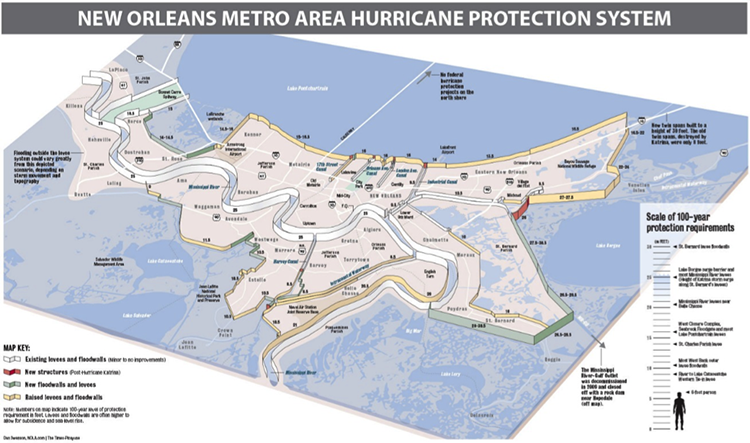New Orleans - One Decade of Recovery: 2005 - 2015
What has happened since Katrina?
The process of recovery from a major disaster such as the flooding of New Orleans by Hurricane Katrina is long and complex. Today, the city functions normally again, bearing scars in the form of hundreds of large empty lots, a smaller population, and many examples of increased resilience. Lessons can and should be learned and applied to other disasters, such as Houston's flooding in 2017 by Hurricane Harvey.
The article, Building Back the Big Easy: Lessons from New Orleans’ Recovery from Hurricane Katrina, provides an overview of the changes that have taken place in the city of New Orleans through the eyes of an outside observer with a background in urban resilience and disaster risk management. Artessa Saldivar-Sali is a Resilience Engineering Specialist, World Bank. The article outlines several aspects of the recovery process, including the rebuilding of neighborhoods worst hit by the flooding, and repairs to the vital infrastructure that drives the economy. It also points to the changes in disaster management and the improvements in the flood defenses surrounding the city, including a surge barrier that is the largest of its kind in the world, and raising of the 133 miles of levees that surround the entire city.
Shortly after Hurricane Katrina, there was much debate about the wisdom of rebuilding New Orleans and the vision of what New Orleans would look like ten or twenty years later was elusive. The article, New Orleans, Louisiana Population 2020, from the World Population Review website, examines the demographic changes in the decade following Katrina. It outlines the steady growth in population since Hurricane Katrina literally emptied the city of every single resident and killed 1,500 in southern Louisiana. In 2006, the population was only 223,000, down from the 2000 census level of 484,000. In the decade following, the population steadily grew back to a level of 343,800 in 2010 and 391,495 in 2016.
When Hurricane Isaac approached New Orleans in 2012, the city’s residents were advised not to evacuate as the repairs to the hurricane protection system were complete. This was sound advice at that time and for that particular storm, which flooded communities on the outside of the levees. For those who know New Orleans now, with its rebuilt levees, rising housing prices, and seeming amnesia – reminders about the struggle to rebuild are important. It may also be helpful to keep an awareness of the continued vulnerability of the lowest-lying city in the U.S. and most of the world.

